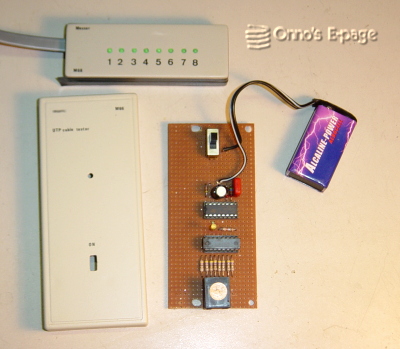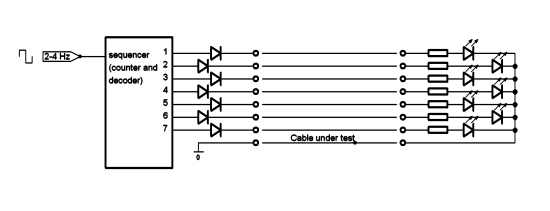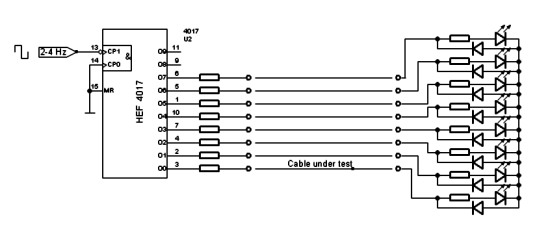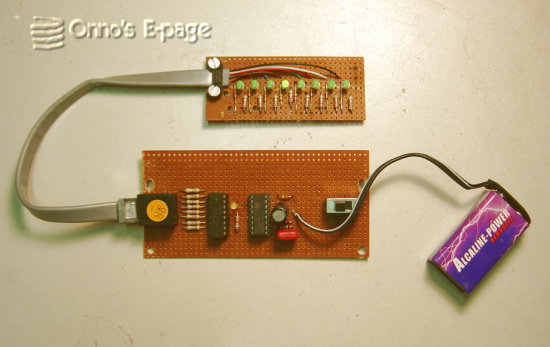RJ-45 cable tester


In the autumn of 2007 I was replacing all the old phone wiring in my house by Cat5E cabling, suitable for Gbit Ethernet networks. I tried the cabling by connecting my laptop and my network router. Unfortunately, a few cable runs did not work, and I could not find out why. At this time, I also had a few unreliable Ethernet connection cables.
In order to be able to properly test the cables, I wanted to build a cable tester. Of course, it would be cool to do a reflection test to localise shorts or subtle cable faults, but most cable problems are simple continuity problems that can be tested more easily using a continuity tester. I decided that I needed a circuit that connects a voltage to one of the wires at one end and a display unit that shows which wires are selected at the other end. Perhaps I could think of a solution where I could have the display unit at the same end as the sequencer, but then I would have to connect some kind of terminator at the other end. I could not think of a way to test the cable without walking from one end to the other to connect my testing gear. The bottom line is, if you want to do an end-to-end test, you will have to be at both ends.
I came up with a circuit using 7 LEDs at one end, using one of the wires as a return (“-”) wire. That left me with a problem: what if the return wire is interrupted or non-existent? It is not enough to know that the return wire is interrupted, as the cable can have more than one fault. I thought of a few ways to split the test in two, using different return wires. But I found that unelegant.

Sequencing 7 wires with one wire as return using 7 LEDs as indicator.
I almost went to buy a simple cable tester. Today, you can buy one for less than 10 Euros. But no. I wanted to build one myself.
Then decided to google a moment for other cable tester designs. On SB projects I found a circuit that was very similar to mine, designed by San. He had found an elegant solution to the return wire problem: he used all of the unused wires as a return, putting them in parallel. I thought of ways to improve the circuit, but decided to hurry up and build it. After all, I had a cabling problem waiting.

Sequencing all 8 wires with all non-selected wires as return.
I used a small plastic case for the display unit. On a piece of perfboard, I mounted 8 green high-efficiency LEDs, looking through 8 holes in the case.

The inside of the display unit and sequencer.
The tester is really easy to use. Connect the sequencer to one end and the display unit to the other end. If everything is OK, you'll see all 8 LEDs blink sequentially. If one LED remains dark there is an interruption. If two LEDs light simultaneously, there is a short (by the way: in case of a short, the LEDs have to share the current so they are dimmer than normal). If the LEDs light out of order, two or more wires have been swapped. There is always a small pause (during 2 of the 10 counts of the sequencer, no wire is activated) so you can determine which is the first one in the sequence (the first one after the pause).
Copyright © 2008 by Onno's E-page published 2008-09-06, last updated 2016-03-01